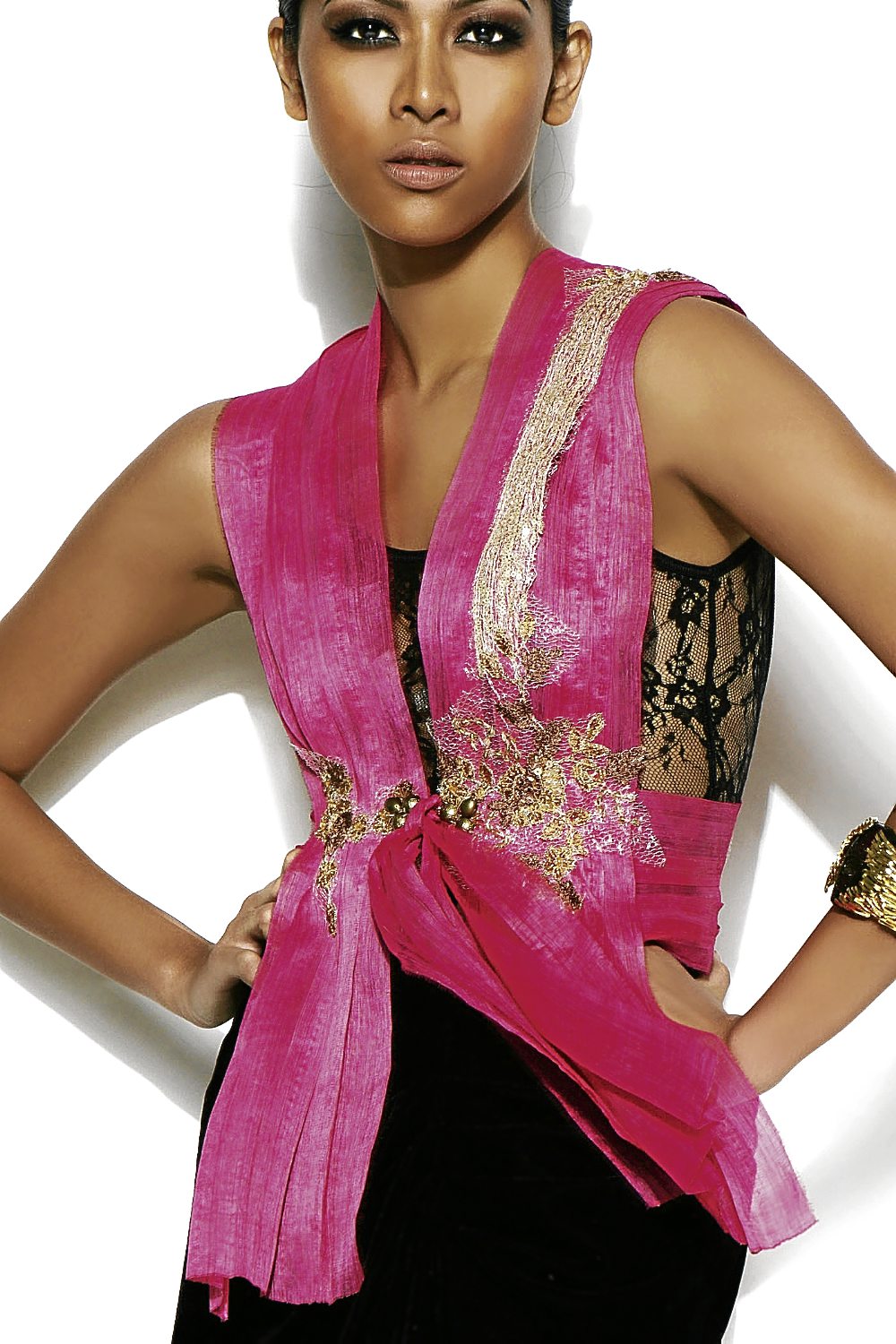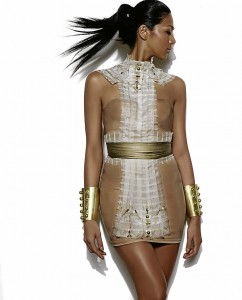
Lulu Tan-Gan has been known to go against the grain.
When most fashion entrepreneurs started outsourcing their merchandise from China, she insisted on producing her own knits in her workshop here, where they’re hand-knit—the same way she has been doing it since 1985.
Now that the trend is fast, disposable fashion, she’s going back to traditional artisan craftsmanship—slower, lower yield and, consequently, costlier way of producing fashion.
“I’m starting all over again! I’m young again!” she announces with a glee that matches her youthful good looks and disposition.
This March, the knit queen is going full throttle with the release of her contemporary fashion collection made of piña fabric, a material that she started dabbling in back in 2006, a year before she opened her L Manila boutique at Greenbelt 5.
Unlike her 2007 collection, which showed predominantly piña formal wear, however, Tan-Gan’s new venture will show piña more as an apparel accessory than a garment, a way to showcase the indigenous fabric in a more modern and contemporary light. She calls it “indigenous couture.”
Challenge
The piña fabric, which is woven from the pineapple fiber, is traditionally used in Filipino formal wear, such that it has been a challenge to repackage the fabric to appeal to a wider, more contemporary consumers of fashion.
“We want to prove that it’s not just for special, Filipiniana events,” says Tan-Gan. “We want to promote it to make it relevant, to be used as an apparel accessory, like a vest or a scarf, to be worn over a garment, to be worn with denim and in a variety of colors. We want piña to be accessible.”
Experimenting with piña has had Tan-Gan dealing with several challenges posed by the qualities of the material. Compared to knits, piña is flimsier. It’s also quite lightweight and, unlike knits, it doesn’t have a stretch.
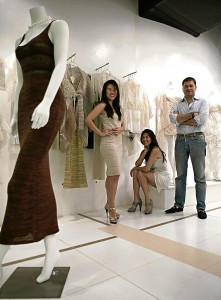
“I’ve learned to accept its properties and work with them and innovate,” she says.
Tan-Gan clarifies that she’s not giving up knits. She has, in fact, combined the two materials in some of the pieces. “I can’t say goodbye to knitwear, so I had to think of ways to mix them together.” All pieces are handmade.
Tan-Gan has brought in her daughter Jessica, 25, to take care of operations. She finished merchandise marketing and business management, summa cum laude, at California’s Fashion Institute of Fashion Merchandising.
She has also hired Sergio Boero, an Italian who’s an experienced fashion industry professional and educator, to become the company’s managing director. Boero, who was general manager of the Istituto Europeo di Design Moda Lab and has worked for several years in China, first moved to Asia in 2001 and is married to a Filipina.
“When I first met Lulu and saw the piña wear, I was fascinated with the idea and its potential,” he says. “The fiber is old but the concept of the design is new. Working with natural materials is a mega trend all over the world.”
Intimidated
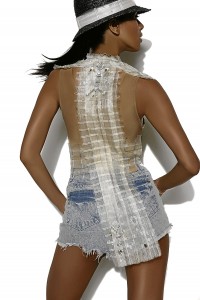
Just as her knitwear, Tan-Gan’s piña is designed with the jet set in mind, so practicality and movement are foremost qualities of the design. Tan-Gan says the fabrics are cut—“engineered”—such that they’re easy to pack and travel, for out-of-town weddings, for instance. The higher-end pieces are, in fact, packaged in a traditional woven basket called tampipi.
Tan-Gan acknowledges that Filipinos are intimidated with piña because it creases easily and they think it’s hard to maintain, requiring dry cleaning after each wear.
“Not true at all,” says her daughter. “Some of the pieces you can just put in a net bag and stuff in the washing machine. Others you can hand-wash. It’s the same with knits.” Jessica says they’re just as easy to iron. Only the more elaborate pieces with heavy beadwork require dry cleaning. Washing, in fact, makes the fabric softer and suppler. Over time, it requires a patina that adds to its vintage character.
Boero thinks it may be easier to introduce piña abroad since foreigners don’t have preconceived notions about the fabric. “They see it and they don’t think barong,” he says. “You just need to explain what it’s all about.” And for that, he’s now developing the company’s website, where they will also be selling.
“It’s attractive to foreigners,” Tan-Gan says, as evidenced by the walk-ins in her boutique during the course of this interview. “It has not really been shown that much outside so we’re developing it.”
On March 8, she will show her Spring-Summer 2012 piña collection in London with a group of local designers via the Ayala Foundation. It will also be shown at Manila FAME next month, and in Hong Kong for a group show in April, then at Fashion Watch. The collection will be available at the Greenbelt 5 boutique in March.
Most of Tan-Gan’s materials come from the piña weavers of Aklan.
“It’s slow but I don’t want to change their traditional way of weaving, we just maximize what they can do,” Lulu says.
“It’s respecting the tradition,” Jessica explains.
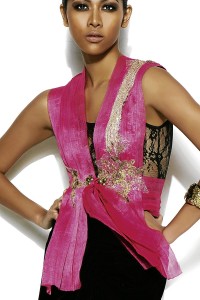
Boero also says they need to consider the sustainability of the material. Asked if China is killing the world’s artisan crafts, says the Italian: “I don’t think of it that way. It gives people a chance to choose. Some are afraid of China because they can do things, but there are things they can’t do. You can compete in another level, like creativity and design.”
Handloom
“Once you mechanize it, it becomes just like any imported material,” says Tan-Gan. “My knits are all handloom. I feel like I’ve not given it justice; people think it’s just cut and sew, and it’s not, that’s why it has lasted for over 25 years… Anything that’s of great quantity really bores me. I’ve wanted piña for the longest time. I’ve learned to accept its qualities and see its better side.” She adds with a chuckle, “It’s a matter of spending time, like marriage, to see how it behaves.”
Prices start at P3,000-P6,000 for smaller vests; from P20,000 for the short dresses; from P60,000 for long dresses.
Tan-Gan says her company’s efforts aim to give justice to the craft and the craftsmen. “We’re losing our craftsmen. When there’s no demand for their work, it’s not lucrative. If there are more people buying, they can increase their price.”
Jessica says consumers her age are also discovering the versatility and potential of piña. “They’re amazed that piña can be sexy,” she says.
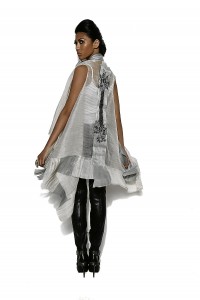
While most consumers now like to buy disposable fashion, Tan-Gan believes there’s a market with a sensibility than can appreciate traditional wear that’s worth investing in.
“It takes strong values,” she says. “Even if you can’t afford it, if you can see it and feel it, it adds to national pride.”
At the moment, Tan-Gan personally cuts the piña fabrics, noting that most cutters work too fast, without respect for the fabric. Mistakes can be costly. It’s important to follow the grain of the material, she stresses.
“It’s nonstop learning. I’m continuously improving my skills even after 25 years with this new material. Perseverance is very important. And there’s passion; it drives you to go after what you want. People were telling me to just buy knits from China, I felt it would be a mortal sin! Eventually you just become a retailer, you’re no longer a designer.”
Then, she adds, laughing: “That’s why we’re not yet billionaires.”
To which Boero warns, “Not yet!”

